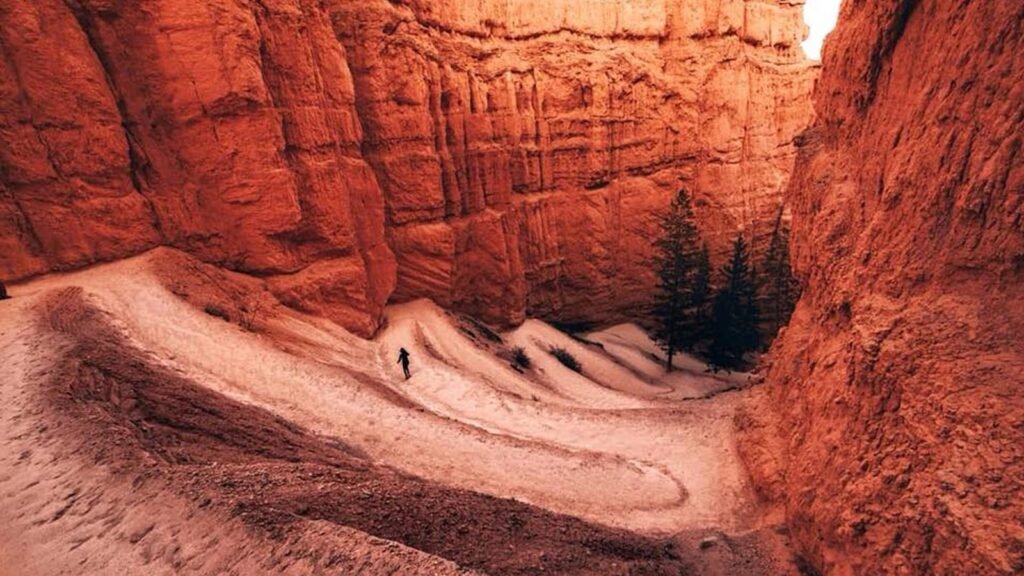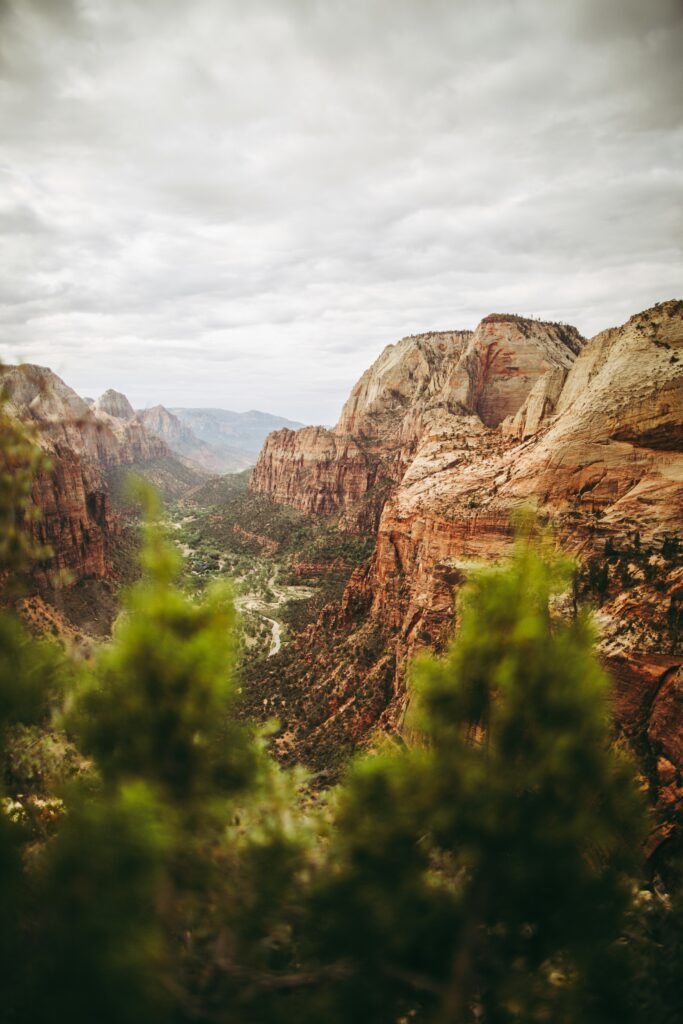If you’re looking for one of the most iconic hikes in the American Southwest, the Navajo Loop & Queens Garden Trail in Bryce Canyon National Park should be high on your list. This trail offers a front-row seat to the park’s surreal landscape of hoodoos, fins, and spires, all painted in vibrant shades of red, orange, and pink. It’s a relatively short loop that packs a punch when it comes to scenery, making it a must-do for both casual hikers and seasoned adventurers alike.
Trail Overview: What to Expect
The Navajo Loop & Queens Garden Trail is a combination of two popular trails in Bryce Canyon National Park, forming a scenic lollipop loop that takes you from the rim into the heart of the Bryce Amphitheater.
- Distance: Approximately 2.9 miles round-trip
- Elevation Gain: Around 600 feet
- Estimated Time: 1.5 to 3 hours depending on pace and stops
- Trailhead Location: Sunrise Point or Sunset Point (both are accessible via the park shuttle or car)
The trail descends from the rim into the canyon, winding among towering hoodoos and narrow switchbacks. Along the way, you’ll pass famous formations like Thor’s Hammer, Wall Street (when open), and the Queen Victoria hoodoo in Queens Garden. The trail is well-marked and easy to follow, making it ideal for a half-day adventure that delivers maximum visual impact without requiring a full-day commitment.
Permit Requirements and Fees
No special permit is required to hike the Navajo Loop & Queens Garden Trail. However, entrance to Bryce Canyon National Park does require a fee:
- Private Vehicle: $35 (valid for 7 days)
- Motorcycle: $30
- Individual (on foot or bicycle): $20
- America the Beautiful Pass: Accepted and highly recommended if visiting multiple national parks
You can pay the entrance fee at the park gate or purchase your pass in advance through the National Park Service website.
Best Time to Hike Navajo Loop & Queens Garden – Bryce, UT
Bryce Canyon sits at over 8,000 feet in elevation, so weather and trail conditions can vary significantly by season.
Spring (April–May)
Spring brings melting snow and cooler temps. Trails may still be muddy or icy in early spring, especially in shady areas like Wall Street.
Summer (June–August)
This is the most popular time to visit. Expect warm days, crowded trails, and afternoon thunderstorms. Start early to beat both the heat and the crowds.
Fall (September–October)
Arguably the best time to hike here. Cooler temperatures and fewer crowds make for a pleasant experience. Fall colors add a unique twist to the landscape.
Winter (November–March)
Hiking is still possible, but snow and ice may make the trail slippery or partially closed. Crampons or microspikes are recommended.
Trail Conditions and Difficulty
This trail is considered moderate due to the elevation change and altitude. While it’s not overly strenuous, the initial descent and final ascent can be a challenge if you’re not used to hiking at altitude.
Trail Surface
The trail is mostly packed dirt with some loose gravel. Switchbacks can be steep and narrow, especially in the Wall Street section (which is occasionally closed in winter due to rockfall or ice).
Hazards
- Altitude: At over 8,000 feet, you may feel winded more easily.
- Slippery Conditions: Ice and mud can make footing tricky, especially in shaded areas.
- Exposure: Limited shade, so sun protection is a must.
Safety Tips and Recommendations
- Start early to avoid midday heat and crowds.
- Stay on marked trails—shortcuts damage fragile ecosystems and can be dangerous.
- Bring plenty of water; there are no water sources on the trail itself.
- Wear sturdy hiking shoes with good grip.
- Check trail conditions at the visitor center before heading out, especially in winter.
Essential Gear to Bring
- Daypack with hydration bladder or water bottles
- Trail map or downloaded GPS app (AllTrails, Gaia)
- Sunscreen and lip balm with SPF
- Hat and sunglasses
- Layered clothing (mornings can be chilly even in summer)
- Snacks or light lunch
- Camera or smartphone for photos
- Trekking poles (optional but helpful on steep switchbacks)
- Microspikes (winter only)
Nearby Amenities and Camping Options
Parking
Parking is available at both Sunrise Point and Sunset Point, but it fills quickly in peak season. The free park shuttle is a great alternative.
Restrooms
Flush toilets are available at both trailheads. There are no restrooms on the trail itself.
Water
Potable water is available at the visitor center and some trailheads. Always fill up before you start the hike.
Camping and Lodging
- North Campground: Open year-round, first-come, first-served in winter.
- Sunset Campground: Open seasonally, reservations available.
- Lodging: Bryce Canyon Lodge (inside the park) and various hotels in Bryce Canyon City just outside the entrance.
Final Thoughts: Is Navajo Loop & Queens Garden – Bryce, UT Worth the Hike?
Absolutely. This trail is one of the best ways to experience the magic of Bryce Canyon without committing to a full-day trek. It’s accessible, visually stunning, and offers a variety of terrain that keeps things interesting. Whether you’re a first-time visitor or a seasoned hiker, the Navajo Loop & Queens Garden Trail delivers a memorable adventure that showcases the unique geology of this incredible national park.
Frequently Asked Questions
How long does it take to hike Navajo Loop & Queens Garden?
Most hikers complete the loop in 1.5 to 3 hours, depending on pace, fitness level, and how often you stop for photos or breaks.
Are dogs allowed on Navajo Loop & Queens Garden?
No, pets are not allowed on this trail. Bryce Canyon has very limited pet-friendly areas, so plan accordingly if traveling with a dog.
Are there restrooms on Navajo Loop & Queens Garden?
Yes, there are restrooms at both Sunrise and Sunset Points. There are no facilities along the trail itself.
Is Navajo Loop & Queens Garden suitable for kids?
Yes, many families hike this trail. Just be aware of the steep switchbacks and keep a close eye on younger children near drop-offs.
What gear do I need for Navajo Loop & Queens Garden?
At minimum, bring water, sun protection, good hiking shoes, and layers. In colder months, microspikes may be necessary for icy sections.


